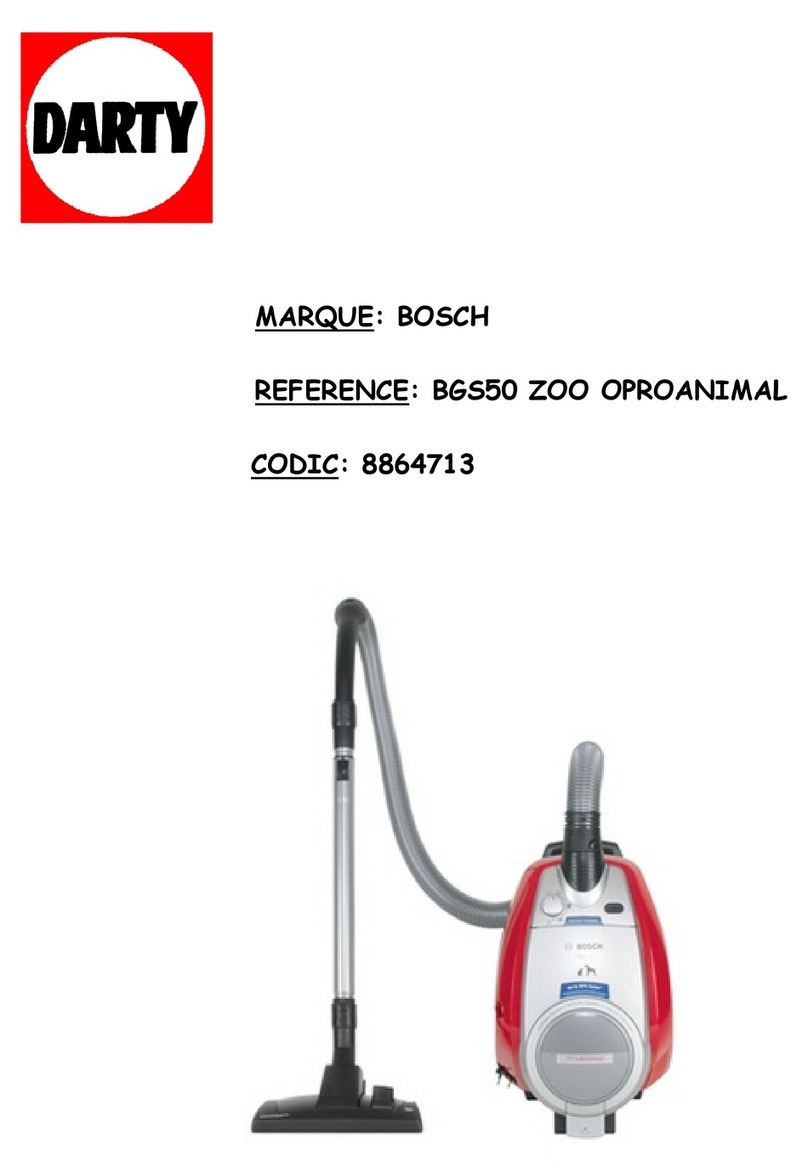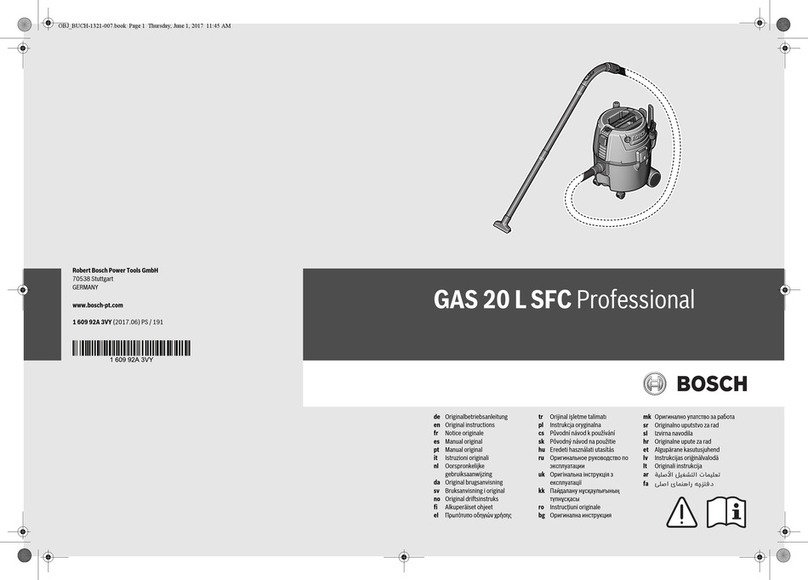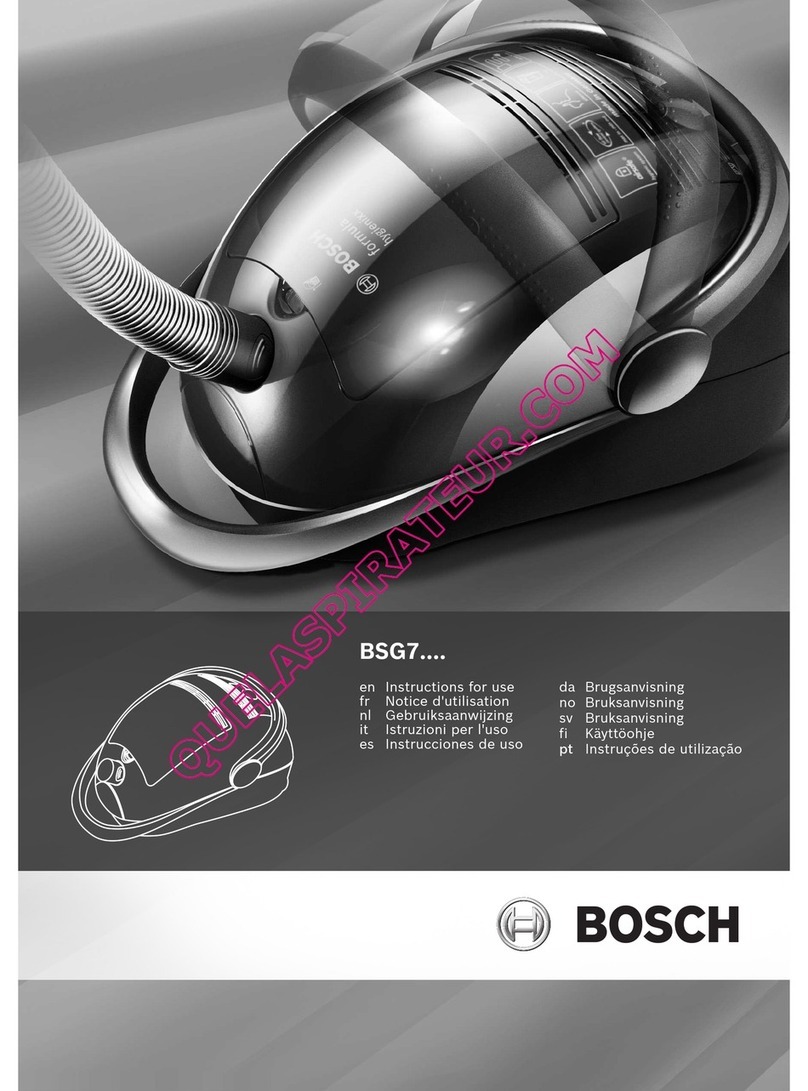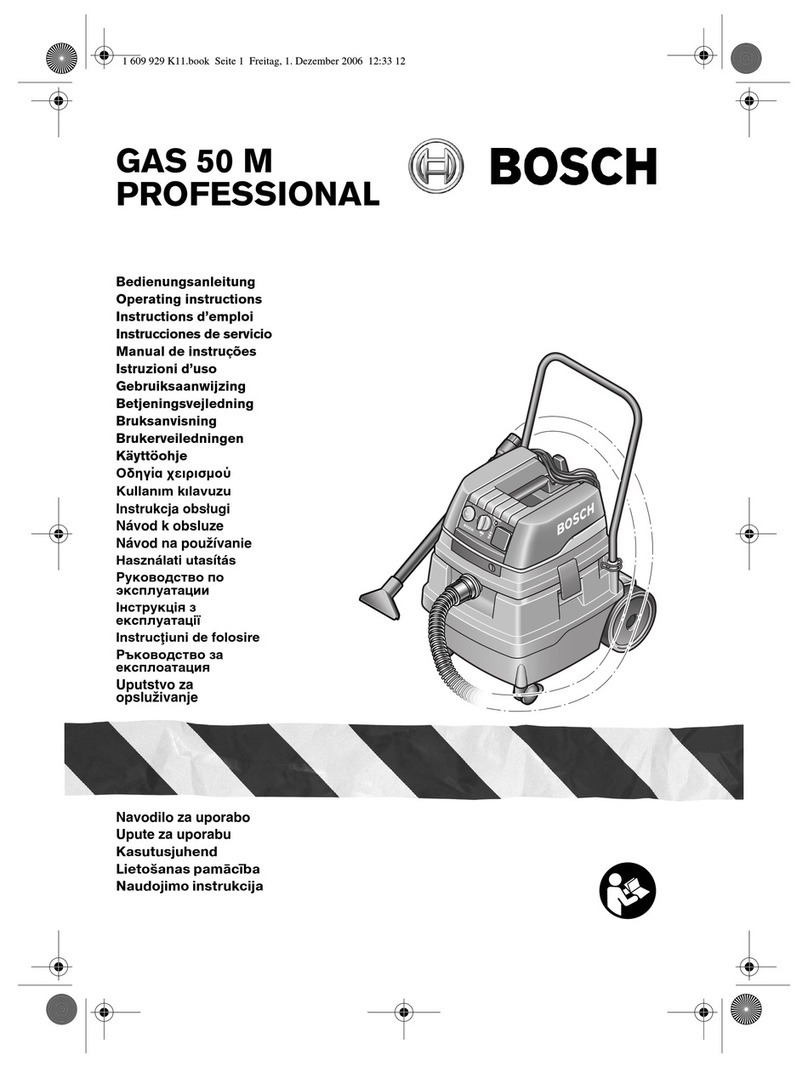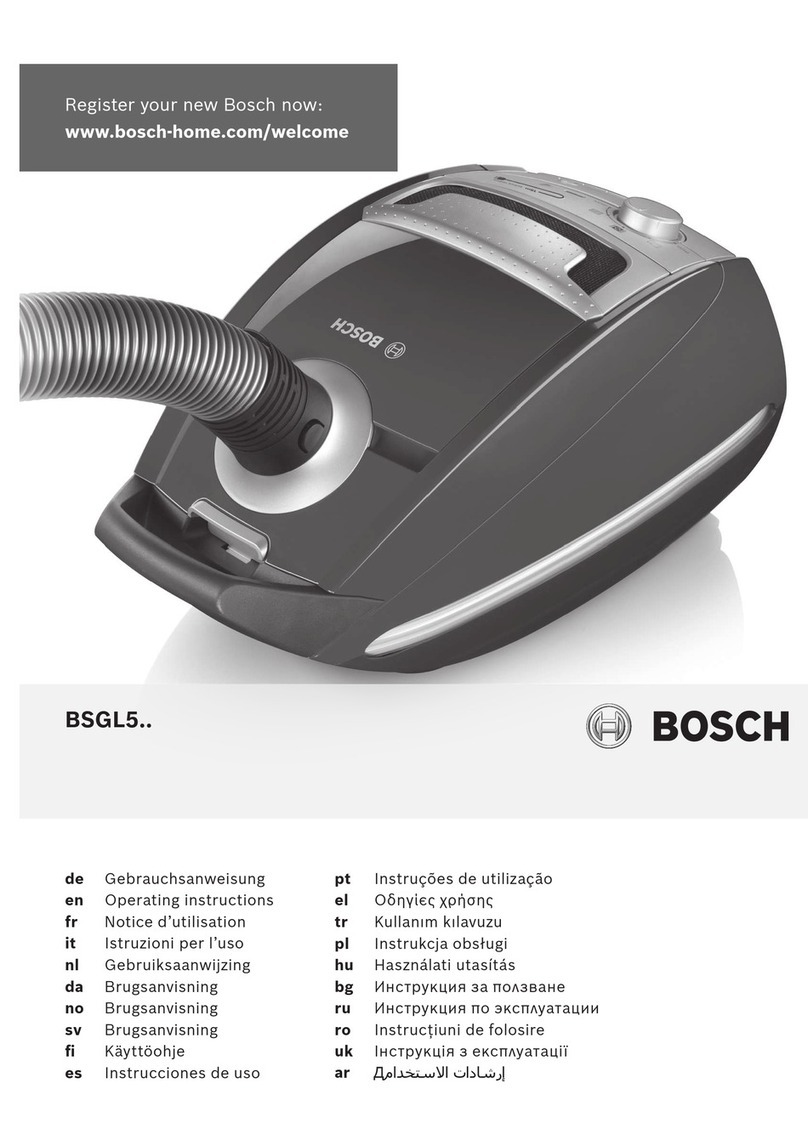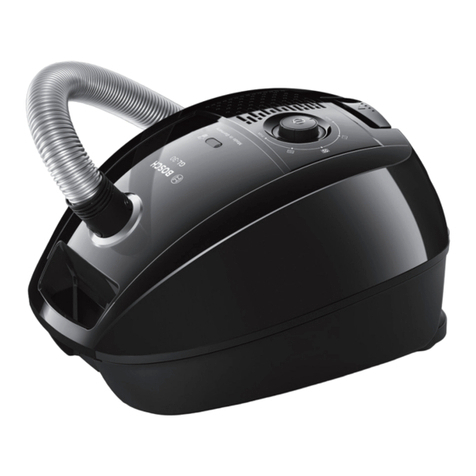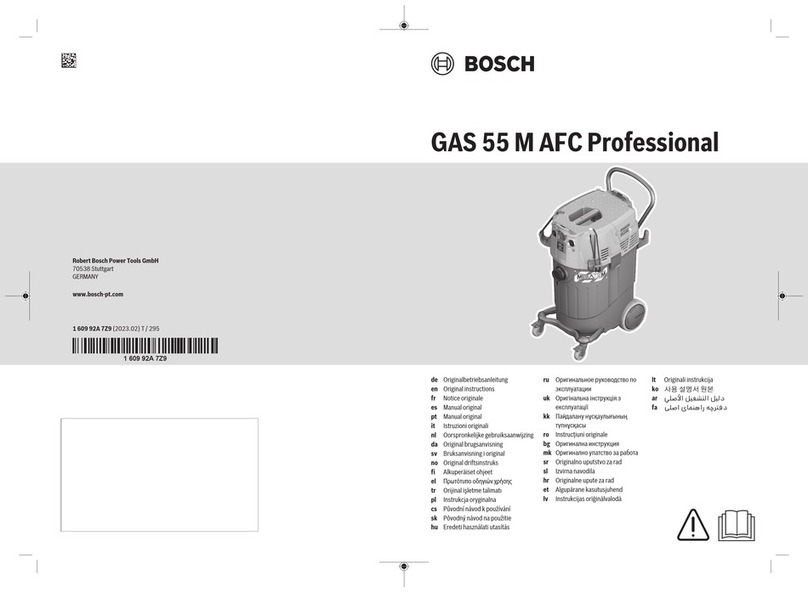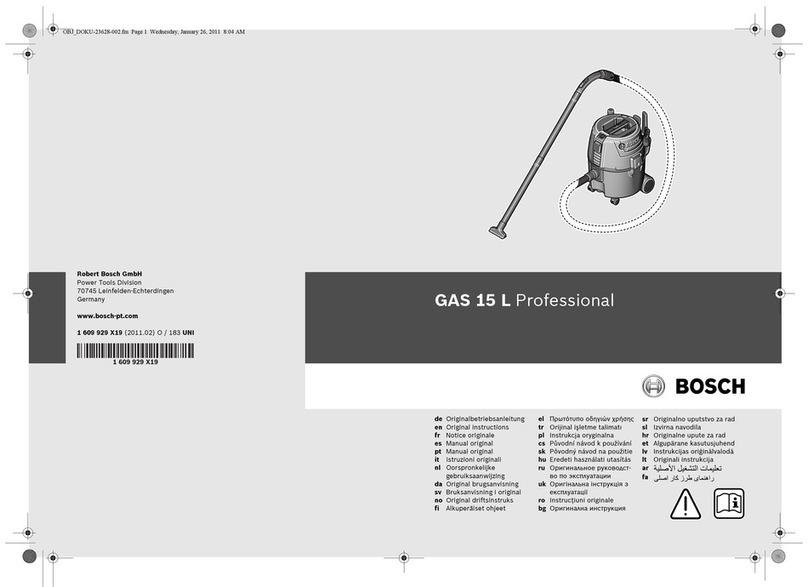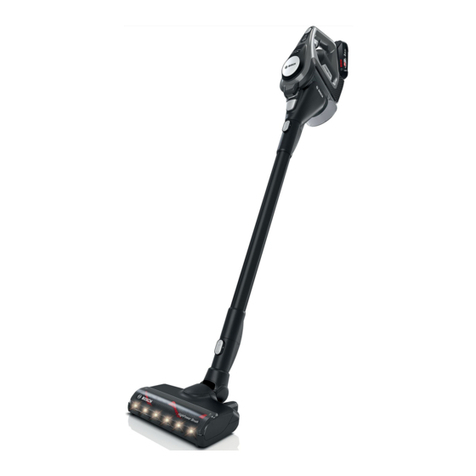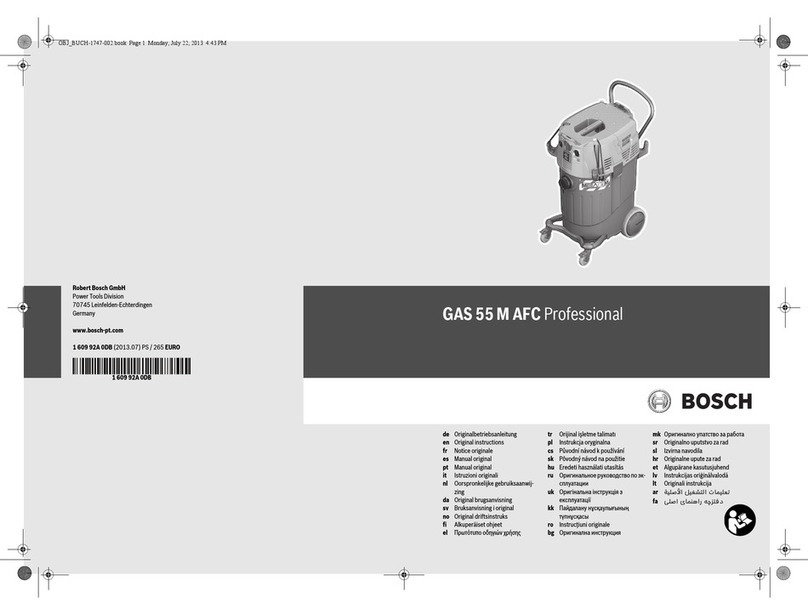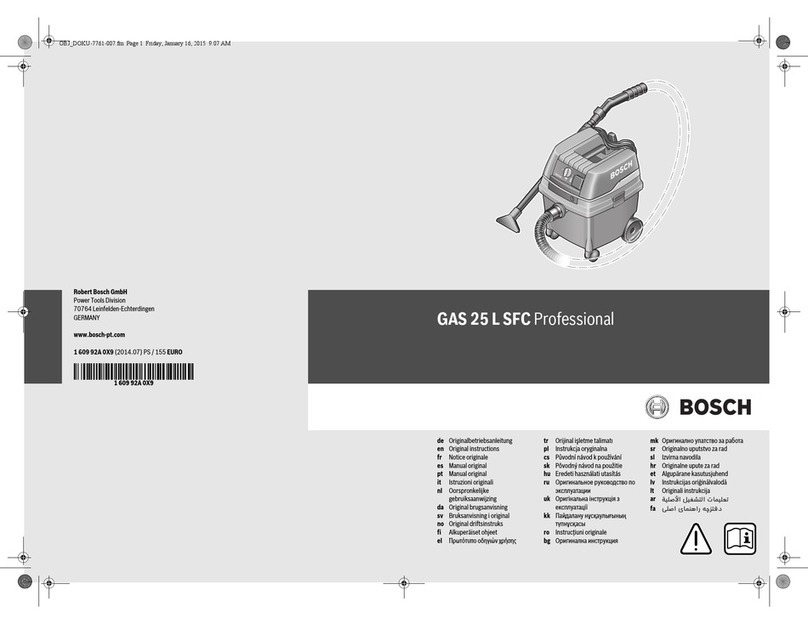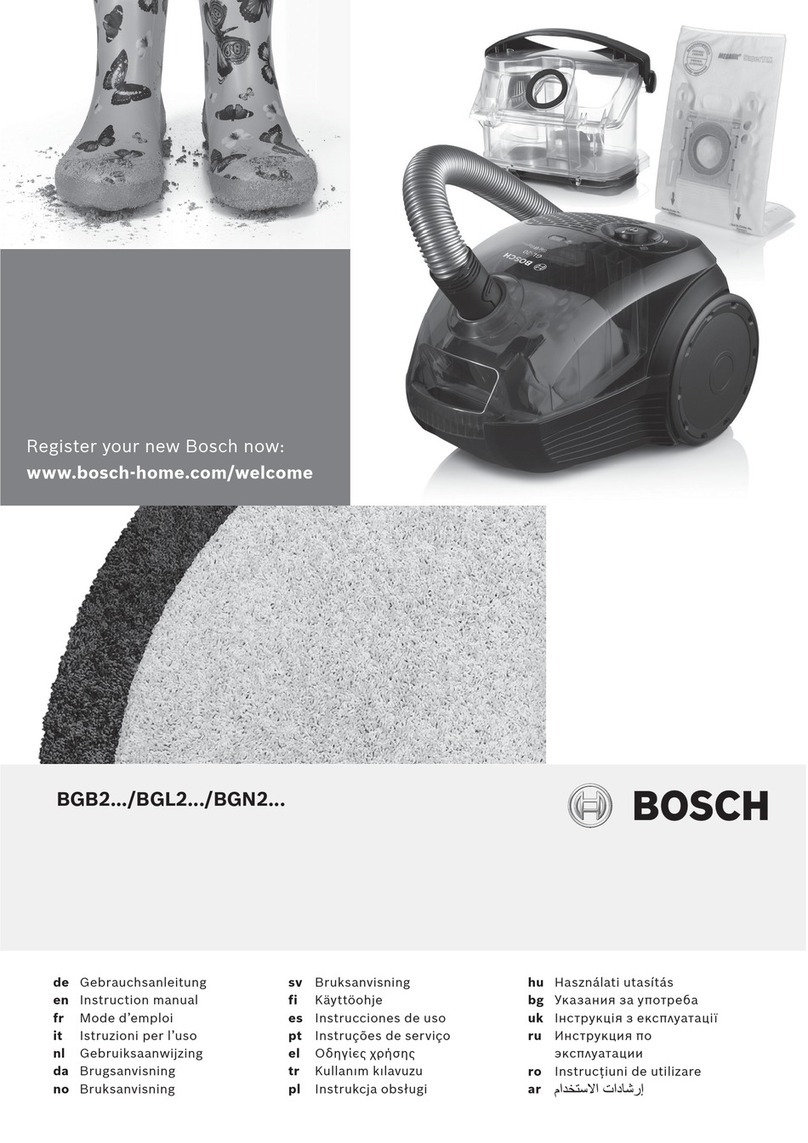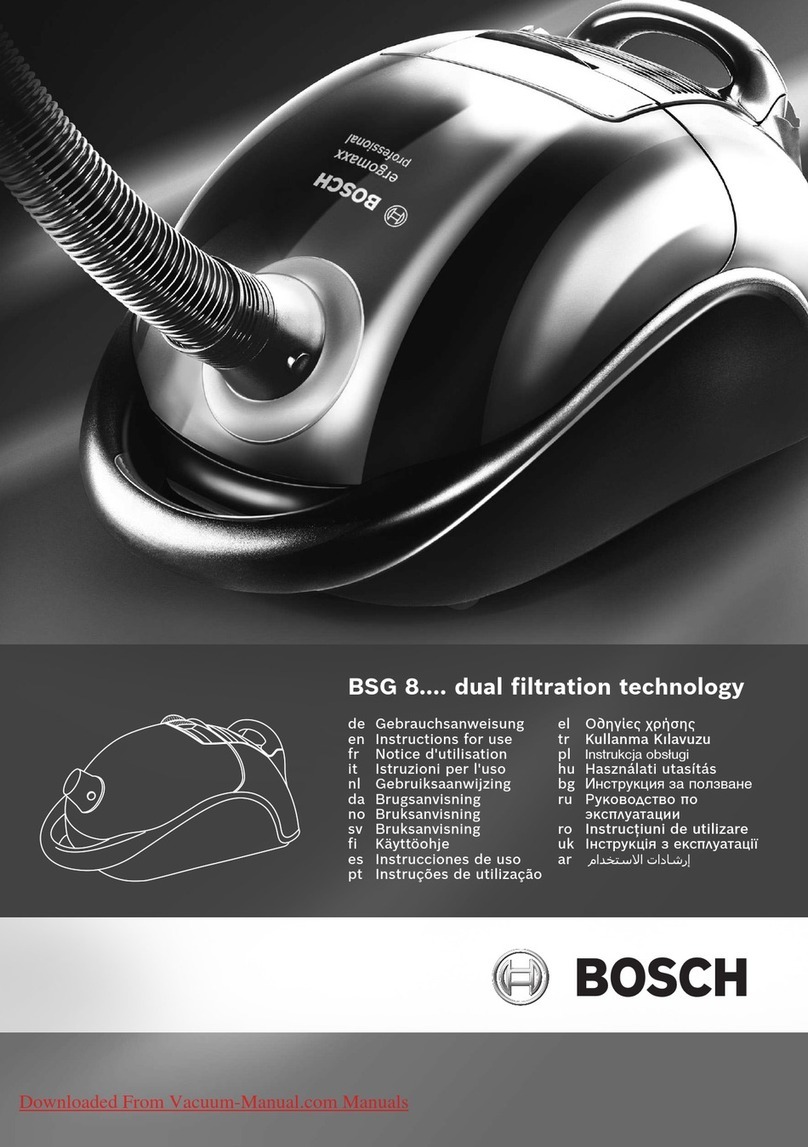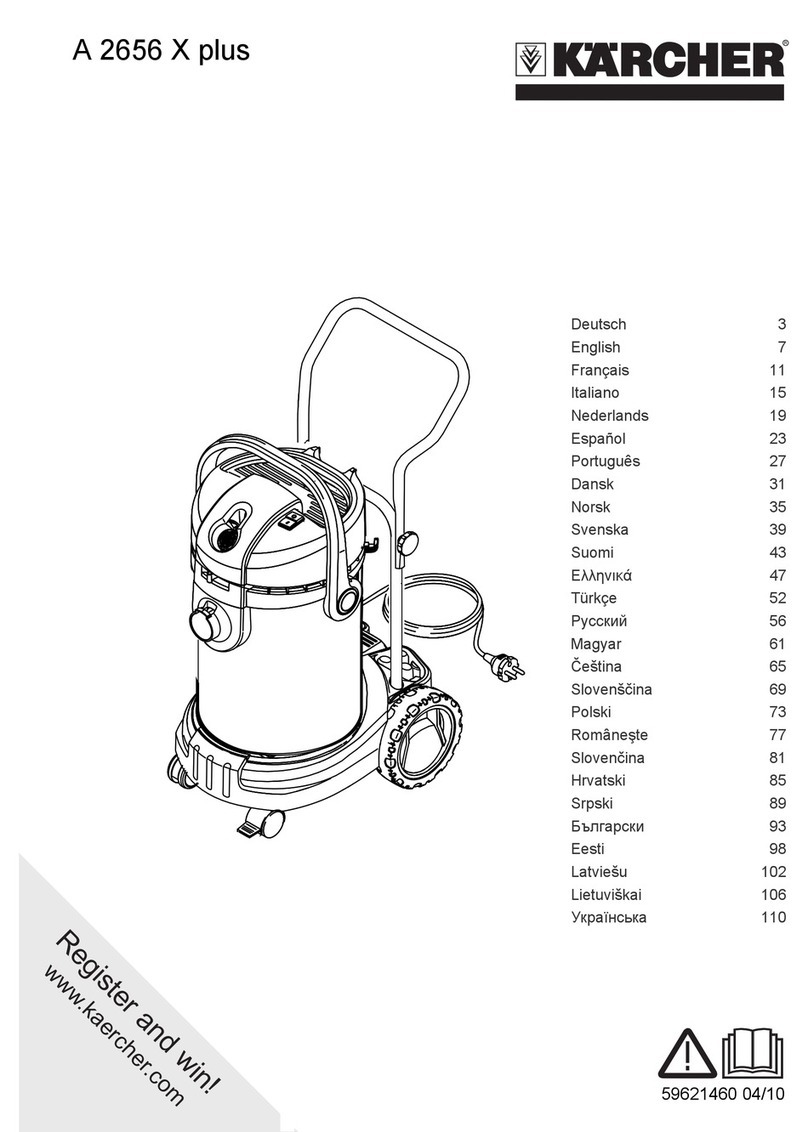
Deutsch | 9
Bosch Power Tools 1 609 92A 3WO | (15.9.17)
Deutsch
Sicherheitshinweise
Lesen Sie alle Sicherheitshinweise und An-
weisungen.VersäumnissebeiderEinhaltung
der Sicherheitshinweise und Anweisungen
können elektrischen Schlag, Brand und/oder
schwere Verletzungen verursachen.
Bewahren Sie diese Anweisungen gut auf.
Dieser Sauger ist nicht vorgesehen
fürdieBenutzungdurchKinderund
Personenmiteingeschränkten phy-
sischen, sensorischen oder geisti-
gen Fähigkeiten oder mangelnder
Erfahrung und Wissen.
Andernfalls
besteht die Gefahr von Fehlbedie-
nung und Verletzungen.
Beaufsichtigen Sie Kinder.
Damit
wird sichergestellt, dass Kinder nicht
mit dem Sauger spielen.
Saugen Sie nicht Buchenholz- oder Eichenholzstaub,
Gesteinsstaub oder Asbest. Diese Stoffe gelten als
krebserregend.
Benutzen Sie den Sauger nur, wenn
Sie ausreichende Informationen für
den Gebrauch des Saugers, die zu saugenden Stoffe und
für deren sichere Beseitigung erhalten haben. Eine sorg-
fältige Einweisung verringert Fehlbedienung und Verletzun-
gen.
Der Sauger ist geeignet zum Saugen
von trockenen Stoffen und durch ge-
eignete Maßnahmen auch zum Saugen von Flüssigkeiten.
Das Eindringen von Flüssigkeiten erhöht das Risiko eines
elektrischen Schlages.
Saugen Sie mit dem Sauger keine brennbaren oder ex-
plosiven Flüssigkeiten, zum Beispiel Benzin, Öl, Alko-
hol,Lösemittel.SaugenSie keine heißen oder brennen-
den Stäube. Betreiben Sie den Sauger nicht in
explosionsgefährdeten Räumen. Die Stäube, Dämpfe
oder Flüssigkeiten können sich entzünden oder explodie-
ren.
Benutzen Sie die Steckdose nur für
die in der Betriebsanleitung festge-
legten Zwecke.
Schalten Sie den Sauger sofort aus,
sobald Schaum oder Wasser austritt
und entleeren Sie den Behälter. Der Sauger kann sonst be-
schädigt werden.
Der Sauger darf nur in Innenräumen
gelagert werden.
Reinigen Sie die Füllstandssensoren
für Flüssigkeiten regelmäßig und prü-
fen Sie, ob sie beschädigt sind. Die Funktion kann sonst be-
einträchtigt sein.
Wenn der Betrieb des Saugers in feuchter Umgebung
nicht vermeidbar ist, verwenden Sie einen Fehler-
stromschutzschalter. Der Einsatz eines Fehlerstrom-
schutzschalters vermindert das Risiko eines elektrischen
Schlages.
Schließen Sie den Sauger an ein ordnungsgemäß geer-
detes Stromnetz an. Steckdose und Verlängerungskabel
müssen einen funktionsfähigen Schutzleiter besitzen.
ÜberprüfenSievor jeder Benutzung Sauger, Kabel und
Stecker. Benutzen Sie den Sauger nicht, sofern Sie
Schäden feststellen. Öffnen Sie den Sauger nicht
selbst und lassen Sie ihn nur von qualifiziertem Fach-
personal und nur mit Original-Ersatzteilen reparieren.
Beschädigte Sauger, Kabel und Stecker erhöhen das Risi-
ko eines elektrischen Schlages.
ÜberfahrenoderquetschenSiedasKabelnicht.Ziehen
Sie nicht am Kabel, um den Stecker aus der Steckdose
zu ziehen oder den Sauger zu bewegen. Beschädigte Ka-
bel erhöhen das Risiko eines elektrischen Schlages.
Ziehen Sie den Stecker aus der Steckdose, bevor Sie
denSaugerwartenoderreinigen,Geräteeinstellungen
vornehmen, Zubehörteile wechseln oder den Sauger
weglegen. Diese Vorsichtsmaßnahme verhindert den un-
beabsichtigten Start des Saugers.
Sorgen Sie für gute Belüftung am Arbeitsplatz.
Lassen Sie den Sauger nur von qualifiziertem Fachper-
sonal mit Original-Ersatzteilen reparieren. Damit wird
sichergestellt, dass die Sicherheit des Saugers erhalten
bleibt.
Der Sauger enthält gesundheitsge-
fährdenden Staub. Lassen Sie Lee-
rungs- und Wartungsvorgänge, einschließlich der Beseiti-
gung der Staubsammelbehälter, nur von Fachleuten
durchführen. Eine entsprechende Schutzausrüstung ist
erforderlich. Betreiben Sie den Sauger nicht ohne das
vollständige Filtersystem. Sie gefährden sonst Ihre Ge-
sundheit.
Prüfen Sie vor der Inbetriebnahme den einwandfreien
Zustand des Saugschlauchs. Lassen Sie dabei den
Saugschlauch am Sauger montiert, damit nicht unbe-
absichtigt Staub austritt. Sie können sonst Staub einat-
men.
Benutzen Sie den Sauger nicht als Sitzgelegenheit. Sie
können den Sauger beschädigen.
Verwenden Sie das Netzkabel und den Saugschlauch
sorgfältig. Sie können andere Personen damit gefährden.
Reinigen Sie den Sauger nicht mit direkt gerichtetem
Wasserstrahl. Das Eindringen von Wasser in das Sauger-
oberteil erhöht das Risiko eines elektrischen Schlages.
WARNUNG
WARNUNG
WARNUNG
WARNUNG
ACHTUNG
ACHTUNG
WARNUNG
OBJ_BUCH-1702-004.book Page 9 Friday, September 15, 2017 2:17 PM
